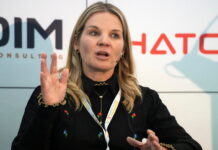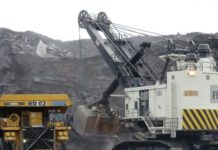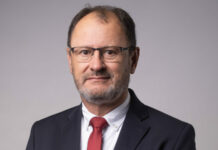
[miningmx.com] — Uranium mine development and exploration
company Extract Resources on Monday said it expected to release an updated
resource estimate on its Rossing South project in the third quarter of 2010.
The company reported that the project’s definitive feasibility study (DFS) was
progressing well and was on track to confirm the project’s potential to be one of the world’s largest uranium mines.
“The base case mine plan remains low risk, bulk tonnage, open pit mining, with ore processed through a conventional agitated tank leach plant,” the company said in a statement.
The Rossing South project has been confirmed as the highest grade granite-hosted uranium deposit in Namibia and one of the most significant uranium discoveries in decades.
“The size of the Rossing South mineralised system continues to grow with strong drilling results continuing from Zones 1 and 2. There are encouraging indications of significant mineralisation on the western limb of the Rossing South antiform and high grade mineralisation in both zones.” The company said.
Extract aims to announce an updated Rossing South resource in the third quarter 2010. This revised resource estimate will incorporate infill and extensional drilling that has been completed since July 2009.
“The updated estimate is expected to increase the overall size and confidence levels of the Rossing South resource,” Extract said.
Operating costs
As part of the ongoing process of optimising the currently defined resource, the
most recent mine plan incorporates an average stripping ratio of 6.9:1 over the
life of mine.
Open pit mining studies indicate that approximately 120 million tons of pre-strip
material is to be removed to enable ore movement rates of approximately 15 million
tons per annum to feed the processing plant.
In the preliminary cost estimates (PCE) released in August 2009, several items
were excluded from the initial capital costs estimate.
“Extract is continuing to refine the cost of independently developing Rossing
South, including the costs of using either an owner-operator mine fleet or contract
mining. Studies to fully define the costs associated with procurement of water, power and acid delivery, together with external infrastructure including rail and road, are ongoing,” the company said.
Kalahari Minerals, whose subsidiary Kalahari Uranium holds a 40.41% interest in
Extract, said the operating costs are unlikely to be significantly different to those
stated in the scoping study, which indicates that the Rossing South project is still set to be a profitable, low risk, bulk tonnage, open pit mine with a mine life in excess of 20 years.
The company said an upgraded resource from Zones 1 and 2 of Rossing South
should considerably increase the overall size of the uranium resource and also
reiterate the global significance of this mineralised system.
“We are highly encouraged by this news, which confirms that Extract is making
strong progress towards publishing the Rossing South Definitive Feasibility Study,
and in turn, attributing additional value to its world-class Husab Uranium Project,”
said Kalahari executive chairperson Mark Hohnen.
“The delay in the definitive feasibility study is attributable to the fact that the resource continues to grow in size, which increases the time required by Extract to better define the ore body and in particular to identify the high grade resource,” Hohnen said.










